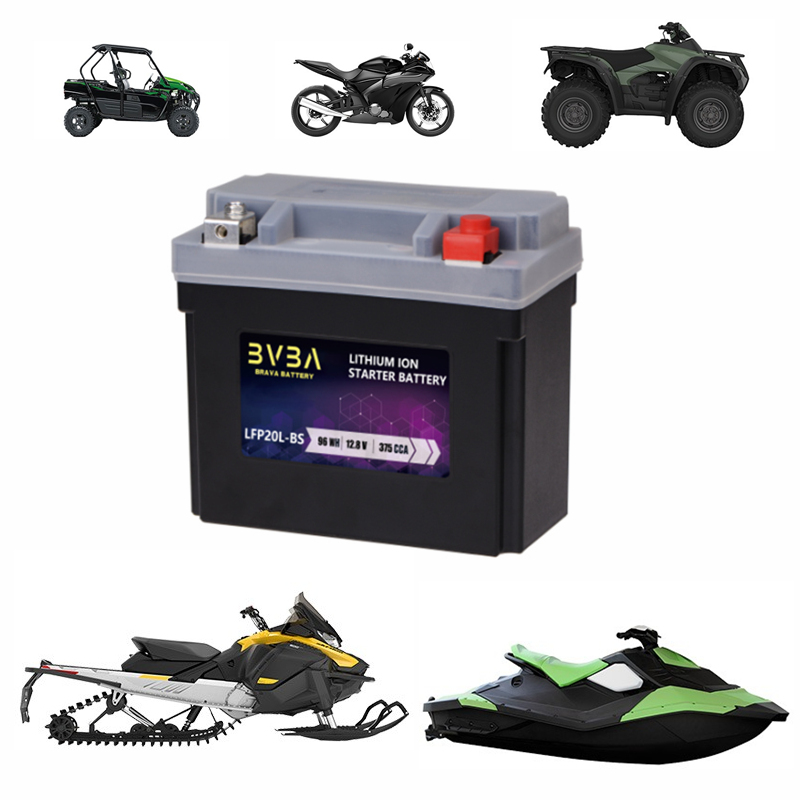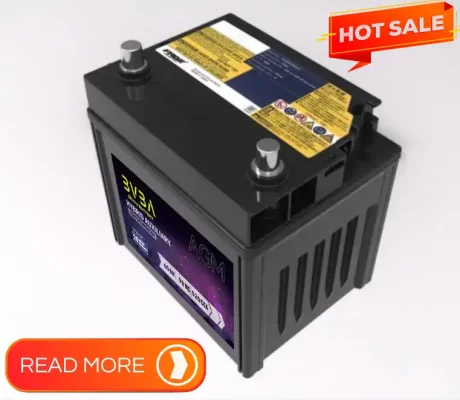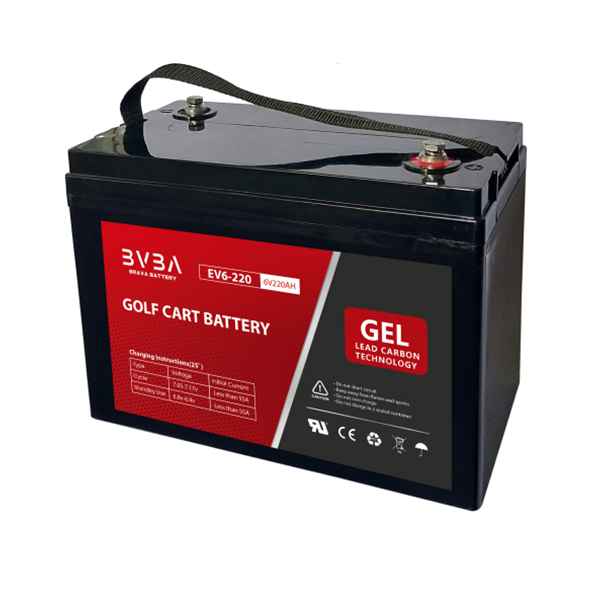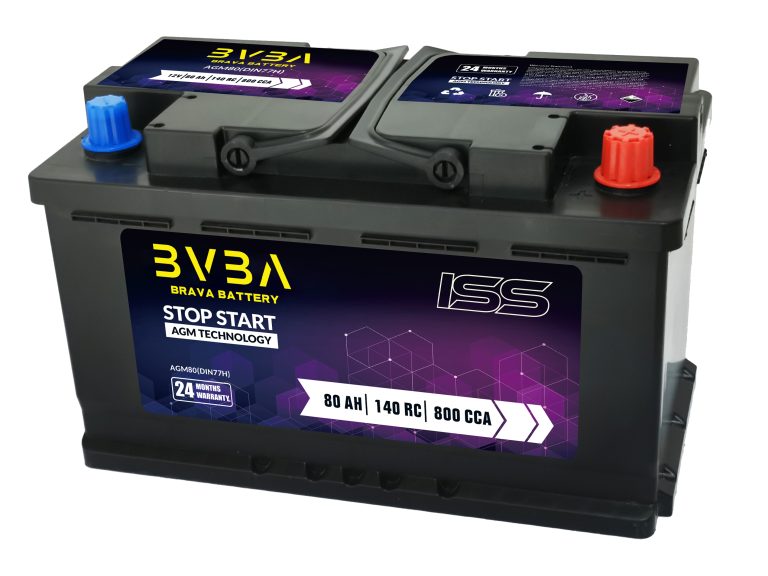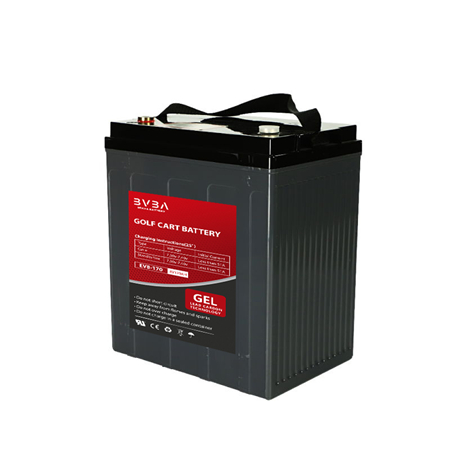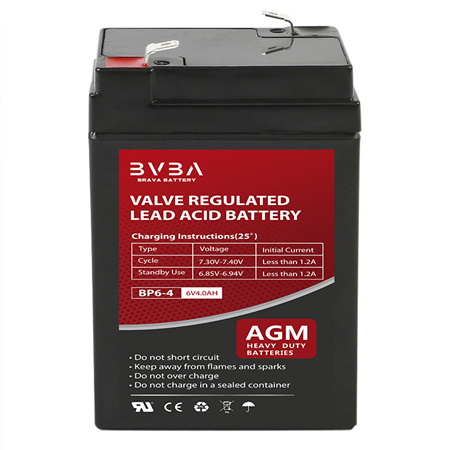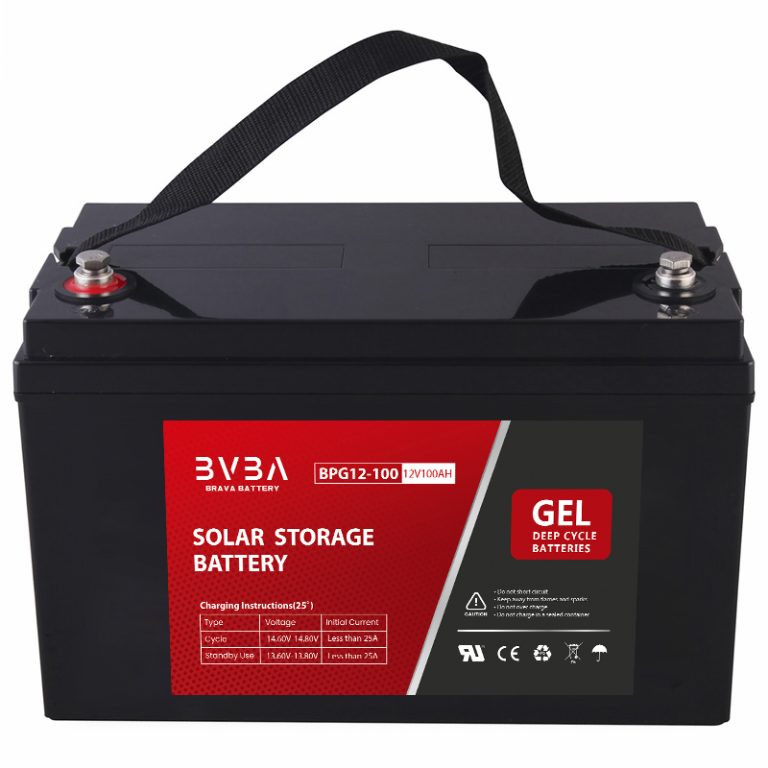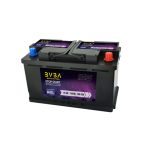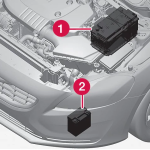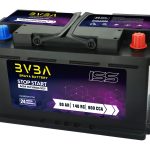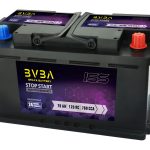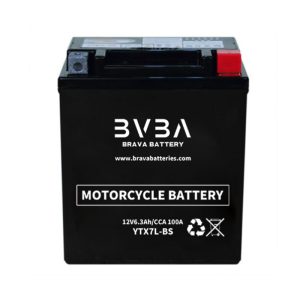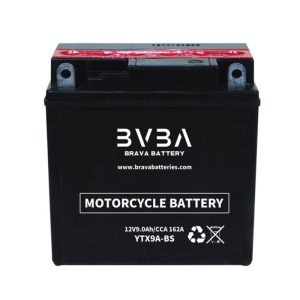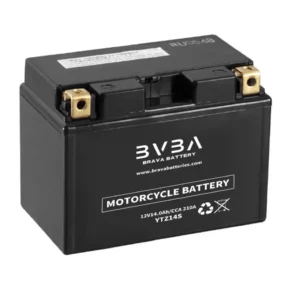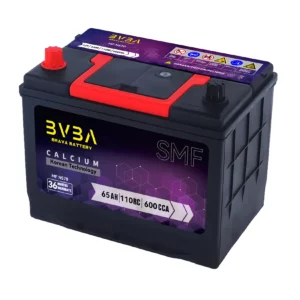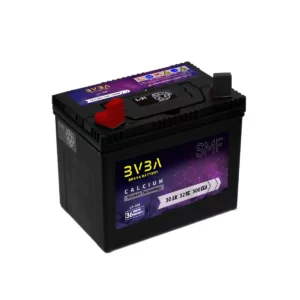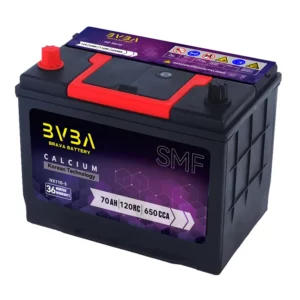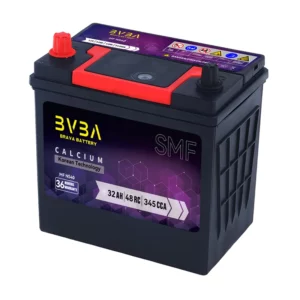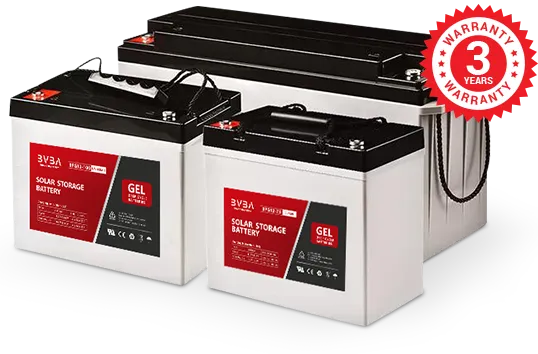A motorcycle battery is a specific category of high-performance batteries used for certain powersport applications. They’re built strong for long-lasting use and typically require little to no maintenance depending on the specific battery type or brand.
Choosing a motorcycle battery
Motorcycle batteries come in a variety of constructions for a variety of motorcycles. The older ones are flooded lead acid and typically are white and you can see the battery acid inside them. These generally start with a YB prefix for the part number and are usually found in older motorcycles. They don’t have a lot of cranking power but the motorcycles they go in don’t need a lot.
They can be upgraded to an AGM battery of the same physical size, but more cranking power and a better all around battery for about the same price. AGM stands for Absorbed Glass Matt and these mats in the battery literally absorb the liquid making them spillproof and withstand more vibration.
In the AGM line there is a term called factory activated which means the factory puts the acid in and seal the battery and charge it before they ship it. There are some applications that have to have this, such as a sea doo where the battery is mounted on it’s side and it HAS to be spill proof.
Most AGM motorcycle batteries are shipped from the factory without the acid in them. They are supplied with an easy to use container full of acid for the battery store or the end user to fill them up and charge them. This means the battery can sit on the store shelf for years and not go bad as it hasn’t been activated until it is needed. These ones can be mounted on their side as well, but we have a little less faith they won’t spill as the sealing lid isn’t quite as good as the ones the factory uses.
In either case the sealing strip is NEVER removed and the water or acid is NEVER added.
The part number for these usually have a suffix of BS meaning bottle supplied. It is very easy to fill them, and nowhere near as dangerous as some people may think. They give you the exact amount in the bottle pack for that exact battery and it’s as simple as pushing the bottle pack on to to the openings of the battery that are designed to take it. Once the acid is put in, the battery immediately becomes about 50% charged, and then putting it on a small battery maintainer finishes the job. (Everyone should have a small battery maintainer at home to put on their motorcycle battery in the off season anyways)
A lot of times the question from the customer is “ Is it ready to go?” and it can be a balance for the battery store to have them filled and ready to go, versus having to scrap them if that particular part number did not sell that season. Most places will adjust their prices to offset the inevitable scrapped ones, here at Pacific Batteries we do not, we just try to encourage people that if they do need to fill one, it really is quite easy.
Gel motorcycle batteries are also available and they generally have a little higher cranking power. There is not a lot of difference between the GEL and the AGM – the gel’s just gel the liquid instead of absorbing it into a a mat – with a similar result. The GEL’s have a small advantage in how long you could run the stereo with the bike off, and maybe a bit more crank, but as a whole unless the price is a lot better, the AGM does the job very well.
The next step up is lithium batteries. Their three main advantages are much less weight, slower discharge time, and can sit for much longer without being charged. Lithium is the lightest metal on earth and can store a lot of energy. They charge quicker, and deliver a lot more cranking power than a lead acid battery. They typically last twice as long as a lead acid battery and they are a lithium iron construction, NOT lithium ion like your cell phone. They are referred to as LiFePO4 and are much less dangerous to use and handle with excellent thermal and chemical stability.
It used to be the battery did not have a built in management system (BMS) and the early versions had a high failure rate. This was typically user caused by not using the appropriate charger with the BMS built in to the charger. They progressed to where the battery management system was built into the battery itself, and regular chargers could be used (with some exceptions) causing much lower failure rates.
The down sides are that some bikes won’t charge them as you ride if they aren’t at least 13.1 volts at idle and 13.6 volts at speed. Also, while you can use a regular battery charger on them, you have to be careful it doesn’t have an automatic desulfation, repair, recondition, or recovery mode. Another drawback is if you mess up, it’s an expensive mistake compared to lead acid. They are more of a universal fit in general, and you are provided with stuffing material to fill the battery box as needed.
Getting to know your lithium battery matters, they read differently than a lead acid battery with full being 14.34 volts not under load, and 12.86 is critical to not go below which is about 20% of juice left in it.
If you decide to go with lithium it is probably best to buy the appropriate charger meant for the battery.
So it all depends on your motorcycle and your riding habits. There is absolutely nothing wrong with AGM motorcycle batteries, and for your average rider they are the best all around bet. If you have a sport bike and each pound matters, or if you just like the idea of less battery changes, or if you have a high amount of accessories then moving up to the lithium is probably a good idea.
Regardless of your choice the brand matters. All lead acid batteries have to be made the same size as their part number dictates. A YTX14AH-BS for example has to be the same dimensions no matter who makes it. The prefix doesn’t mean a lot, the 14 refers to amp hours (which is a little odd because it is the CCA that starts the bike, the AH is how long it will go with the bike off and accessories running) the AH refers to the polarity and the BS just means bottle supplied.
We supply the CCA rating to all our motorcycle batteries.
An AGM battery for say a Harley is typically a part number YTX20HL-BS. The H stands for heavy duty. The L stands for which side the negative terminal is on. You can get a YTX20L-BS the exact same size with a little less crank. The bike manufacturer provides the cranking power required, so you can purchase the spec’s they provide. It is generally a good idea to go a little higher with the “H” model because as the bike ages, some power transfer is lost.
A company like YUASA, Brava Battery is recognized as making good batteries, They cost more because they cost more to build. There are a ton of off shore brands and some work pretty good, some not so much. About the only way you can know is when the battery store themselves test them before they sell them like we do.
The number one cause for motorcycle battery failure is not using a battery maintainer for the off season.
6Tips for Choosing the Motorcycle Battery
1. Types of Motorcycle Battery
There are five main types of motorcycle batteries. These are: Absorbed Glass Mat (AGM), Gel, Pure Lead, Lithium Iron Phosphate (Polymer Cells), and Lithium Iron Phosphate
Absorbed Glass Mat (AGM)
Gel
Pure Lead
Lithium Iron Phosphate (Polymer Cells)
Lithium Iron Phosphate (Cylindrical Cells)
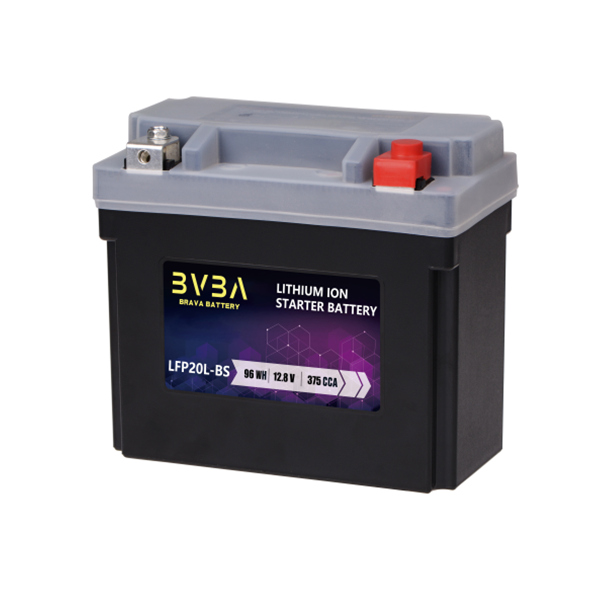
2. Power Rating
When you are considering your options for the best motorcycle battery, make sure you look at the power rating. The power rating is indicated by the number of volts the battery offers.
You need to make sure the battery you pick can handle the kind of bike you have. If you have a top-of-the-range motorcycle, you’ll need a battery that can cope with the extra drain from the tech and functions on your ride.
Higher voltage means your battery should start your motorcycle in harsh conditions or when you haven’t used it for a while.
3. Guarantee
Check out the manufacturer’s guarantee. The longer the guarantee runs for, the better that motorcycle battery will be for you. The last thing you want is to have problems with the battery but not have support from the manufacturer.
Each motorcycle battery manufacturer offers a different level of service in their guarantees. Compare the level of service because a cheaper battery might end up costing you more in the long run.
4. Compatible?
When looking for the best motorcycle battery, make sure you check that it will actually work with your motorcycle. Not every battery will fit or provide the power you need. Look at the motorcycle’s manufacturer guidelines for batteries.
Of course, size is one thing to keep in mind. Check the dimensions of the battery. Look to see what size battery you already have so that you don’t get one that is too big or too small.
5. Maintain
As you can see from the list of the five main types of motorcycle batteries, each one has different levels of maintenance needed to keep it at its best. When you want to get out and ride your bike, the last thing you want to do is have to work on the battery.
Consider charging times. Also, think about how quickly batteries lose their charge if you don’t use your motorcycle very often.
Always try to choose a battery that is maintenance-free if you can, even if you need to spend more upfront. You’ll appreciate that quality in the best motorcycle battery when it comes time to hop on and cruise.
6. Other Things
A couple of other things to bear in mind when choosing the best motorcycle battery are the polarity rating and whether the battery is spill-proof.
Make sure the polarity works with your bike. You don’t want to have to spend time changing connectors or looking for longer (or shorter) cables to hook the battery up.
You also want to choose the best motorcycle battery for its spill-proof rating. This is because motorcycles lean and tip more than many other vehicles. Picking a battery with a 90-percent-plus spill-proof rating will keep your battery and motorcycle working at peak levels longer.
Choosing the Right Powersport Battery
Looking for the right battery for your motorcycle, ATV, side-by-side UTV, snowmobile, or personal watercraft? Batteries Plus carries flooded, AGM, and lithium powersport batteries from trusted brands like Xtreme, Duracell, and Brava Battery. Shop our selection of powersport batteries designed to meet or beat original equipment specifications for cold cranking amps (CCA), reserve capacity (RC), and amp-hour (Ah).
- Cold Cranking Amps – The rating that determines a battery’s ability to start an engine in cold temperatures.
- Reserve Capacity – How long a new fully charged battery can hold its charge.
- Amp-Hour – A measure of how long a battery can provide amperage for one hour.
Dry Battery Vs Wet Battery: What’s The Difference?
Dry Battery
A dry battery, or dry cell battery, uses an extremely low-moisture electrolyte, unlike wet cell batteries that use a liquid electrolyte. In dry cell batteries, the electrolytes used are paste-like, which is relatively dry while still containing a small amount of moisture. The 9-volt, C, A, and watch batteries are some of the most commonly used dry cell batteries.
Dry batteries convert chemical energy into electricity to form electrical energy. The process depends on the type of dry cell battery, but these generally use zinc and manganese dioxide, or zinc and carbon.
Its contents are placed within the electrolyte paste in the battery to produce electricity, creating a chemical reaction. It’s the result of carbon or manganese dioxide reacting with zinc. Then, the electricity is transmitted from the battery with positive and negative electrodes.
Advantages And Uses Of Dry Batteries
Dry batteries have numerous advantages, but they’re most known for being handy and portable since they are lightweight. Also, they have a higher capacity, so they last longer than wet batteries.
Another benefit is the electrolytes used for dry batteries. They aren’t extremely harmful to the environment compared to wet batteries.
With their compact size, dry batteries are suitable for powering smaller devices like smartphones, flashlights, remote controls, radios, and other devices.
Wet Battery
Wet batteries are also known as wet-cell or flooded batteries. These generate power from an electrolyte solution and a pair of electrodes. Unlike dry cell batteries that use a paste solution, these batteries use a liquid electrolyte solution. Also, wet batteries are the original form of rechargeable batteries.
The first wet batteries were solution-filled glass jars that contained electrodes. Modern versions of these batteries are the size of the average toaster and are used for starting most cars and planes.
They’re common for industrial applications where robust voltage is needed. Plus, wet cell batteries can be primary or secondary cells.
Uses And Advantages Of Wet Batteries
Just like the dry type, wet batteries also have their advantages. They contain a huge amount of power and are highly durable, but these are still fairly affordable too. Also, they won’t need frequent replacements.
Since these are often used as rechargeable secondary batteries, they are ideal for motor vehicles. These are also used for aviation, energy storage, electric utilities, and cellphone towers.
If maintained well, wet batteries can have higher charge and discharge cycles. Plus, they’re less prone to damage caused by overcharging.
Comparing Dry Battery Vs Wet Battery
Now we know what these two batteries are, let’s take a closer look at the differences between them.
1. Cost
Wet batteries are cheaper than dry batteries and quite inexpensive for their durability and the amount of power they can supply. They also cost less than dry batteries since they’re easier to manufacture.
As for dry batteries, they’re slightly expensive due to the difficult manufacturing process. However, they require less maintenance than wet batteries, making them less expensive to maintain over time.
2. Capacity
Since they carry a bigger charge, wet batteries have a larger capacity. That’s why these are mainly used for large devices and applications like cellphone towers, energy storage, electric utilities, aviation, etc.
On the other hand, dry batteries are smaller, so they carry less charge. As a result, they’re capable of powering smaller devices such as smartphones, toys, clocks, laptops, and other portable electronics.
3. Portability
Since wet batteries are usually huge and designed for powering large devices, they aren’t easy to move and carry around. Dry batteries are generally smaller, in order to power compact devices, making them easier to carry. With that, dry batteries are more portable than wet types.
Aside from the size, what makes moving wet batteries is the liquid electrolyte since spilling or leaking needs to be prevented. The liquid substance contains highly corrosive electrolytes, including sulfuric acid, which can damage anything that comes into contact with it. So, you’ll need to be extra careful when transporting wet batteries.
4. Reusability
Wet and dry batteries both come in rechargeable and non-rechargeable variants. As with all battery types, rechargeable variants are usually more expensive than single-use batteries.
5. Maintenance
While wet batteries are affordable and commonly available, they require some maintenance. You’ll need to maintain the recommended liquid electrolyte level since the battery will deliver reduced performance if it gets too low.
Wet batteries need constant care to prevent the acid from leaking. The vent caps must be closed tightly to avoid the evaporation of acid.
When it comes to dry batteries, these are maintenance-free. You won’t have to check and maintain its electrolyte level. However, unlike wet batteries, they cannot withstand overcharging, so you must keep track of dry batteries when charging.
Motorcycle Battery Care & Maintenance
No matter what type of battery you choose for your motorcycle, it won’t work properly if it isn’t maintained properly, especially during the off-season. Follow these tips to maintain and get the longest life possible out of your battery.
1. Keep It Charged – Use a battery charger to maintain your motorcycle battery during the off-season or other long periods of inactivity.
NOTE: Lithium batteries have a low self-discharge rate and may require less charging maintenance during the off-season. Keep your lithium battery at around 50% when storing it for long periods of time.
2. Use the right charger – It’s important that you select one that matches the voltage and chemistry of your motorcycle battery.
Example: 12-volt AGM charger goes with a 12-volt AGM battery.
3. Avoid overcharging – Overcharging your motorcycle battery can shorten its life. Prevent this by using a battery maintainer or a charger with an automatic shut-off.
4. Water your battery – If you have a flooded battery, periodically check and top off the electrolyte inside with distilled or deionized water.
NOTE: Do not attempt to do this with an AGM or lithium battery.
5. Keep terminals free of corrosion – Clean off corrosion on the battery terminal using a battery terminal brush and a mixture of baking soda and water. Protect the terminals with an anti-corrosion spray.
Stop-Start Battery Related Products:
Related Products Application:

